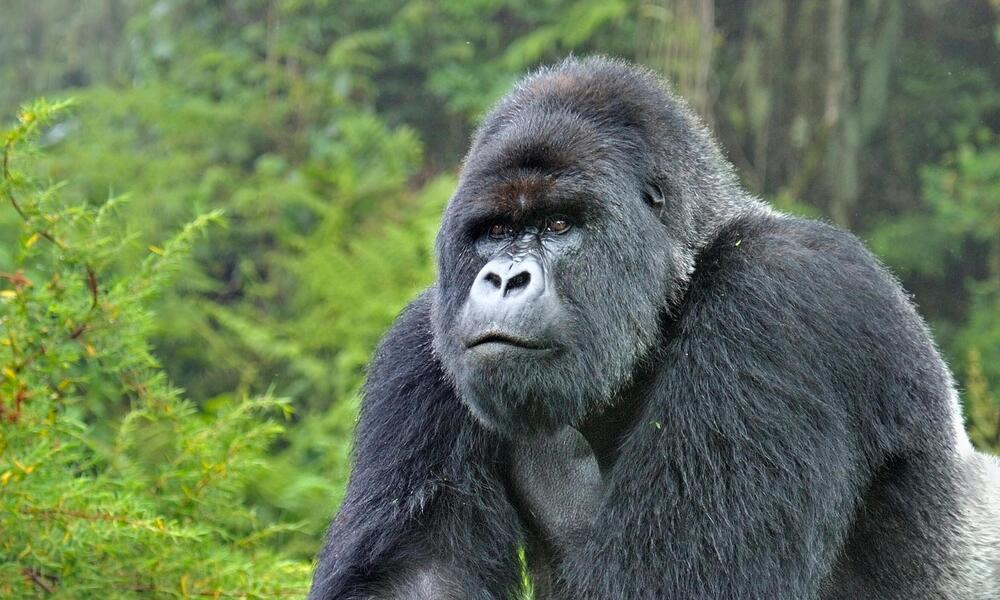Safety During Rwanda Safaris
Are Rwanda safaris safe? This is one of the frequently asked questions by most Maranatha Tours and Travel visitors. The Majority of travelers dream of exploring this stunning “Land of a Thousand Hills” to go Gorilla Trekking and other wildlife safaris. However, stories of visitors gazing in awe at the mountain gorillas just 7 meters away in Volcanoes National Park or lions and leopards lurking just close to the safari land cruisers sometimes raise questions about safety during Rwanda safaris.
Exploring the three most popular safari destinations of Rwanda provides the opportunity to get up close and personal with some of the unmissable wildlife species (that are undeniably dangerous) in their natural habitats, but worry not because your safety is very important to the Park Ranger guides.
While it is sometimes difficult to guarantee that something won’t go wrong, risks can be mitigated by heading out to activities with expert Ranger guides who are most times well trained in not just guiding but also safety procedures. Additionally, it is important for travelers to brush up on the general safari guidelines as well as safety tips prior to setting off on your Rwanda safari.
Interestingly, most Maranatha Tours and Travel safaris to Rwanda and other destinations involve booking the most prominent Safari Lodges, thus safety is paramount at all times. Thanks to the decade-long experience in organizing safaris to the Land of a Thousand Hills, our team is therefore experienced when it comes to ensuring safety during safaris. We bring you the important safety procedures while undertaking different activities in Rwanda and they include;
Safety during Gorilla Trekking in Rwanda
Mountain gorilla trekking is undeniably the most important tourist activity in Rwanda and involves walking through the jungle for several hours searching for the Giant Apes and eventually spending one hour watching them while maintaining a distance of 7 meters away. A number of safety procedures and guidelines are issued before gorilla treks to mitigate any risks for travelers.
First, gorilla treks are done in the Company of experienced Rangers and guides who safeguard travelers from stray animals (such as elephants and buffaloes) and also from the militia.

Mountain Gorilla in Rwanda
As a traveler, you also have the responsibility to follow guidelines issued during the pre-tracking briefing and these include maintaining a reasonable distance (of 7 meters) when watching and photographing the Giant Apes. This reduces the risk of spreading diseases but also ensures safety.
Avoid direct eye contact with the mountain gorillas as the Giant Apes will interpret it as a provocation for a fight.
Also, don’t imitate the mountain gorillas (especially when chest beating or any other displays) as it also calls for aggressiveness from the mountain gorillas.
Mountain Gorilla Trekking is limited to persons of 15 years and above for safety reasons. Besides gorilla trekking being a physically demanding activity that children can’t handle, it is also difficult to guarantee a child’s reaction to gorilla charging.
Safety in Urban Places of Rwanda
While Kigali is considered one of the safest Cities in Africa, it is important for travelers to be vigilant and follow a number of guidelines.
Being street smart is the most important advice you will need for Kigali and in so doing, avoid walking at night, avoid walking alone in lonely or dimly-lit places. Additionally, remove valuables (jewelry, expensive phones, cash, and cameras) from your car and avoid flashing them in public areas.
Whether in Kigali or the National Parks, avoid drinking tap water as it is not safe in this country. Instead, opt for bottled water which is widely available throughout the country.
This country’s Citizens are still recovering from the 1994 Genocide and therefore, be respectful and avoid engaging openly in such conversations.
For travelers on self-drive trips, it is advisable to avoid driving after dark as some roads are poorly lit and animals (especially livestock) are common on the roads (especially in remote areas).
Safety during Game drives and walking safaris.
For safety during game drives, it is important to stay in the safari vehicle at all times to reduce risks of animal attacks (especially Hippos, lions, or any other animals). Avoid standing up or dangling your arms or legs out of the safari vehicle as this might provoke the animals thus putting everyone at risk.
Avoid off-track driving during your wildlife viewing adventure as you could not only scare away animals, and destroy hidden habitats/ecosystems but also put you at risk of being attacked by animals.
All nature/bush/forest walks shouldn’t be done in the company of an armed and experienced Ranger guide for safety reasons.
